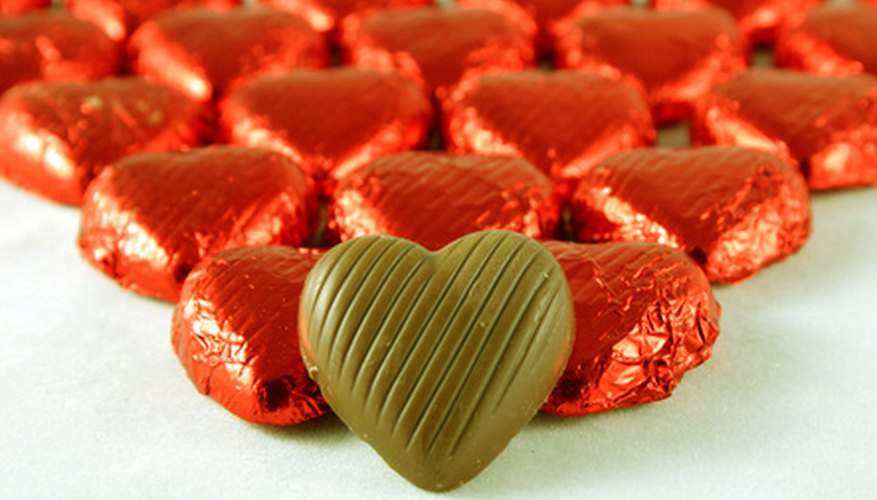In the late 19th century, when moulded chocolate became popular as a sweet, chocolates were poured and set in metal moulds. Modern chocolate moulds are typically made of plastic, but metal moulds and decorative cake pans can still be used for the same purpose. Since you cannot push the bottom of a metal mould to pop the chocolates out if they become stuck, a little preparation up front is necessary to ensure that the chocolate comes out of the mould easily.
Spray the metal mould with non-stick cooking spray before pouring the chocolate into it. If you do not have a non-stick spray, use a paper towel to wipe a small amount of flavourless oil, such as canola or sunflower, in the mould. This will help prevent the chocolate from sticking in any crevices that may be in the design. Be sure to coat the mould lightly, or the chocolate will be greasy.
- In the late 19th century, when moulded chocolate became popular as a sweet, chocolates were poured and set in metal moulds.
- If you do not have a non-stick spray, use a paper towel to wipe a small amount of flavourless oil, such as canola or sunflower, in the mould.
Allow the chocolate to set to room temperature on a worktop or in a pantry. If you need the chocolate to set up quickly, you may put it in the refrigerator for a brief period of time, but be aware that this will cause the chocolate to expand, making it fit tighter in the mould. Allowing the candy to reach room temperature will cause the chocolate to contract away from the sides of the mould, allowing for easy removal.
Pour warm water into a pan or the sink and dip the mould in for several seconds if the chocolate is stuck in the mould and is room temperature. This will heat the chocolate and soften it, allowing it to slip out of the mould.
TIP
Don't get impatient: chocolate will generally release itself from the mould when warm enough.
WARNING
Preparing your metal mould properly before pouring the chocolate will make the process much easier and prevent damage to the finished chocolates.
